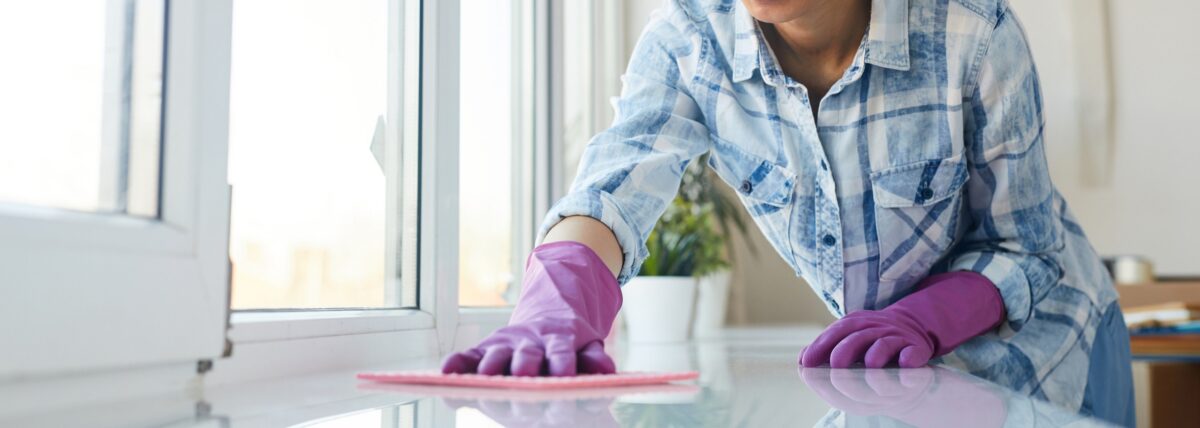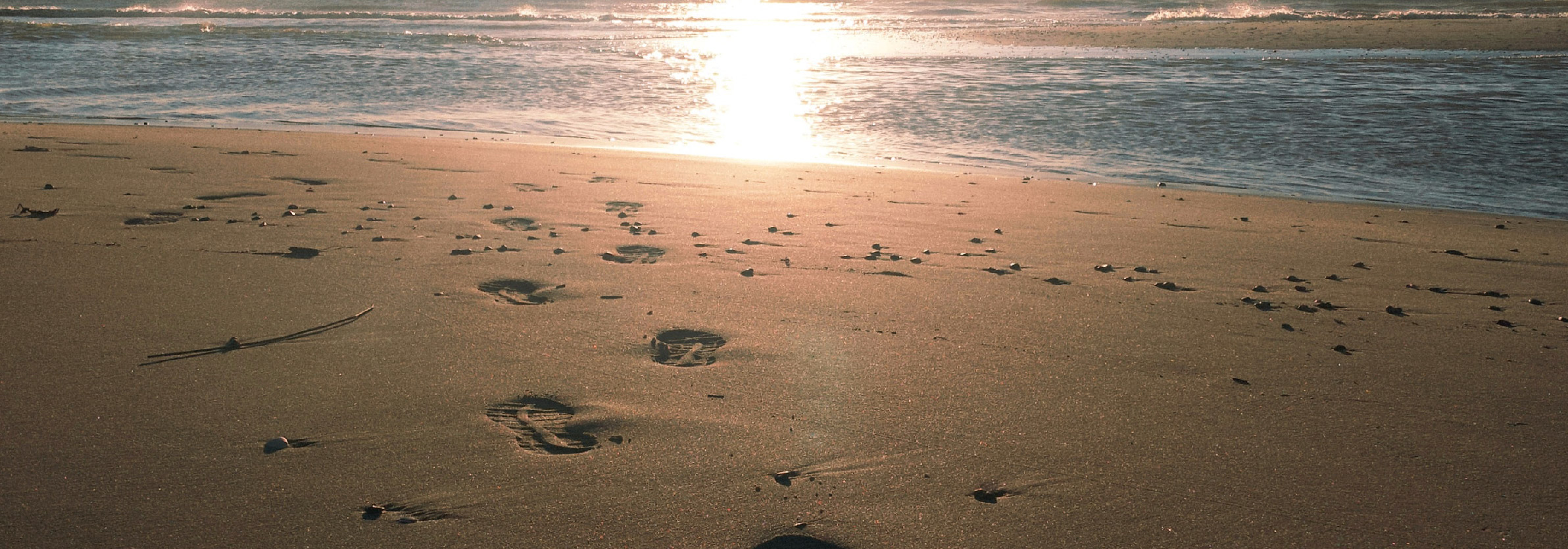Posts Tagged ‘physiotherapy’
Posted on: May 31st, 2023 by physioathand

Bringing a new life into the world is a remarkable journey as a new mom! While breastfeeding offers numerous benefits for both mom and baby, it can sometimes come with its fair share of challenges.
Let’s explore how physiotherapists can provide the support to make your breastfeeding journey a truly beautiful experience!
Posture & Mechanics
Breastfeeding requires proper posture and positioning to ensure optimal latch and prevent discomfort. Physiotherapists are experts in assessing body mechanics and can offer guidance on ergonomics during nursing.
Breastfeeding-Related Pain
Breastfeeding pain can be a significant hurdle for new moms. From sore nipples to engorgement and blocked ducts, these challenges can discourage mothers from continuing their breastfeeding journey. Physiotherapists utilize various techniques such as therapeutic massage, gentle stretching, and ultrasound therapy to alleviate pain, reduce inflammation, and promote healing.
Postpartum Body Changes
Pregnancy and childbirth bring about significant changes in a woman’s body. Physiotherapists specialize in postpartum rehabilitation and can assist new moms in regaining core strength, stability, and pelvic floor function. By addressing any underlying musculoskeletal imbalances, they contribute to overall postpartum recovery and enhance the breastfeeding experience.
Emotional Support
Breastfeeding challenges can take an emotional toll on new moms. Physiotherapists understand the unique emotional and psychological aspects of this journey and provide a compassionate and supportive environment to navigate the ups and downs of breastfeeding with confidence.
Collaborating with the Healthcare Team
Physiotherapists work collaboratively with other healthcare professionals involved in the care of new moms and babies. They communicate and share information with lactation consultants, midwives, and doctors to ensure comprehensive and coordinated support for breastfeeding moms.
New moms deserve all the support they can get on their breastfeeding journey. If you’re a new mom facing breastfeeding challenges, please reach out to us!
Posted on: June 10th, 2022 by physioathand

I am a pelvic health and orthopaedic physiotherapist but I am also a mother to 3 kids.
Prior to going to a breastfeeding training session at 34 weeks pregnant with my first child I had never been exposed to a breastfeeding mother. I was inspired at the session and also heard from the mom demonstrating that she had recently weaned her two year old toddler. My mind was blown!
From then on I was determined to breastfeed. My parents and my in-laws had less positive experiences with breastfeeding, but I was determined. I had amazing support for my husband, but leaned on the Breastfeeding Buddies of Waterloo Region and La Leche League for additional support.
Here are 3 things I learned from my own breastfeeding journey and my training as a women’s health physiotherapist that I am hoping can help you too when beginning your own journey.
1. Pillows, pillows, pillows
If you are sitting in the traditional breastfeeding postures (think cross cradle, cradle and football holds) you want to try and optimize your posture. You can do this by having your back supported by a chair, and adding a pillow or roll in your low back to support the lumbar region. Consider pillows under your arms to support the baby on; this brings the baby to the level of your breasts. Don’t strain yourself down to your baby – this helps to prevent neck and shoulder pain. By bringing your baby up to your breast level, using a regular or nursing pillow, you avoid hiking your shoulders up towards your ears, which often leads to neck pain and headaches!
Use a good pillow to support your neck when you are in bed. There’s a curve in the base of our neck called the cervical lordosis. Use a supportive pillow or roll to cradle this area. You can also just roll up a hand towel and put it inside a pillowcase at this area of your neck.
2. Nursing lying down
Another way to make breastfeeding a more joyful (and perhaps restful) experience is to learn how to nurse your baby lying down in bed. This really helps with those frequent nighttime feedings that you may be experiencing. Sometimes learning this technique as a newborn can be challenging because of the amount of support that a newborn needs, so it’s often easier when your baby is a little bit older. Having the ability to nurse your baby while lying down, with safe co-sleeping, makes night feeding easier so you don’t have to wake up fully or get out of bed and stumble your way over to your crib. You can often go back to sleep and switch your baby to the other side when they’re done.
3. Laid-back breastfeeding
Laid-back breastfeeding means getting comfortable with your baby and encouraging your own and your baby’s natural breastfeeding instincts. Use a bed or couch where you could lean back and be well supported. Not flat, but far enough that when you put your baby on your chest, gravity will keep him or her in a position with the body molded to yours. This type of positioning makes breastfeeding less work for mothers, but also easier for babies to get a deeper latch especially during those early weeks.
These positions use gravity which helps rather than hinders babies natural feeding reflexes making a huge difference when babies are at their most uncoordinated. These positions are also suitable for mothers who have had a Cesarean birth as well as a vaginal birth. Adjustments can be made, such as changing the direction that the baby is lying on the mom. The baby can lie vertically below mother’s breasts, diagonally below the breasts, across her breasts, at her side or even over her shoulder. This means after Cesarean birth a mother can use many positions without the baby resting on her incision.
Another possible adjustment is modifying the angle of recline or how far the mother leans back. In all laid-back positions the mother leans back far enough so that the baby rests comfortably on her body without needing to support her baby with her arms, but is upright enough so she and the baby can easily maintain eye contact. Because most hospital beds are adjustable this is an option during the hospital stay. At home, think about how you’re most comfortable relaxing on the sofa watching TV. For example, most of us lean back on a sofa chair or bed using cushions or pillows so we can relax our shoulders and arms. Being comfortable allows you to maintain these positions for longer without getting aches in various parts of your body.
Breastfeeding can be a magical experience for mom and baby, but it can also be a source of frustration and physical discomfort. If you’re struggling with your breastfeeding journey, know that you are not alone! Please reach out to me or a breastfeeding resource, such as your healthcare professional or organizations, like the Breastfeeding Buddies and La Leche League, to provide you with personal support for a joyful breastfeeding experience.
Posted on: March 31st, 2022 by physioathand

Spring is in the air and so is spring cleaning! After the long winter months, many of us take this time to organize, declutter and freshen up our space. Smell that lemon scent already?
While spring cleaning does wonders for your space, it can be tough on your body if done incorrectly. It might surprise you to hear that aches and pains related to spring cleaning are more common than one might think; we see an uptick in injuries to the back, neck and shoulders every spring!
So whether you are planning on reorganizing your garage, washing your cars, scrubbing your walls and floors or doing outside maintenance work, being mindful of the following do’s and don’ts will allow you to enjoy the fruits of your labour pain-free!
1. Don’t skip the warm-up!
A proper warm-up increases blood flow to your muscles and joints. This improves flexibility and reduces the risk of injury and stiffness after an activity. Start with a brisk walk to get the blood flowing. Do warm-up stretches, such as:
-shoulder circles
-arm across chest
-side bends
-back extensions
2. Mix it up.
Long periods of repetitive tasks like bending, kneeling or overusing one part of your body can cause strain and potentially injury. Be sure to vary tasks and switch up activities to give specific parts of your body a rest.
3. Get down properly.
Avoid knee strain by using a mop to clean your floors and protect your knees if kneeling for long periods. Moving boxes to counter-level when reorganizing can reduce your risk of straining your back. If you do bend over, remember to engage your core muscles.
4. Don’t do all the heavy lifting.
If possible enlist the help of others to move that couch! Always use proper lifting technique: squat down, use your legs, contract your core and pelvic floor, and breathe out on lift. Avoid using your lower back muscles. In women, lifting and straining can cause issues like prolapse and incontinence, which may not be immediately obvious.
5. Slow and steady…
Take breaks! We tend to fall back on bad habits, such as slouching or bending over, when we’re tired. Listen to your body, rest and drink plenty of water to hydrate your joints and connective tissues.
Spring cleaning is a great way to get your body moving! Listening to your body and being mindful of these do’s and don’ts is your best bet to avoid a spring cleaning injury. If you have questions or are sore after spring cleaning, please connect with us.
Posted on: February 14th, 2022 by physioathand

Skiing is one of the most common and popular winter sports around the world. It’s a great way to stay fit and enjoy the winter months – as a family or by yourself – but the skiing fun can quickly be ruined if you don’t prepare and take the proper precautions.
Common Ski Injuries
The most common injuries in skiing affect the lower limb, with one third of injuries involving the knee. Most often these are leg fractures and sprains, such as anterior cruciate ligament injuries, medial collateral ligament injuries or meniscal (or cartilage) injuries.
While on the ski hill, always be sure to take frequent rest breaks, know your limits and skill level, monitor your energy levels, stay on the correct level ski hills, keep in touch with your fellow skiers and make sure you stay focused and concentrated.
Anterior cruciate ligament (ACL) injuries
These occur when a skier lands badly and twists the knee; often the binding will not release. The person may feel a popping sensation and have difficulty weight bearing on that leg due to pain or instability with the feeling that your knee may give way. The ACL helps to keep your knee stable by preventing hyperextension, that is it prevents the top of the tibia from sliding forward on the bottom of the femur. About 50% of all ACL injuries occur with another knee injury, such as a meniscal tear or strain or a medial collateral ligament tear or strain.
Medial collateral ligament (MCL) injuries
MCL injuries are common (especially in beginner skiers) and are often associated with the snow plough position (also called the pizza stop). It can also be caused by a landing or fall.
Meniscal or cartilage type injuries
These types of injury can cause the knee to lock if a piece of cartilage gets torn and gets flipped into the joint (bucket handle tear). This prevents your knee from fully extending and straightening. Meniscal tears are treated with physiotherapy but some require arthroscopic surgery.
How to Identify If Your Knee is Injured
If you are suspecting a knee injury ask yourself the following questions; if the answer is yes to any of the questions you’ve likely strained or torn a ligament in your knee. Instability or an inability to bear weight on the leg could also indicate a potentially significant injury.
- Have you taken a fall?
- Did you hear a popping sound?
- Do you have significant pain?
- Is your knee swollen?
- Is it stiff?
- Do you have problems weight bearing on it?
How to Prevent Injury
Keeping your knees and lower extremities as strong as possible are key to reducing the risk of injuries. When the muscles are strong, the collateral and cruciate ligaments are second line of defense to the torsion and strain that the knees are put through when skiing.
When muscles are weak the ligaments are at a higher risk of strain and therefore an increased risk of injury. Knees are under a significant amount of stress during jumping, turning, stopping and falling. Increasing the strength of your hip, knee, ankle and core can significantly reduce your risk of injury. Whether you are a seasoned athlete or weekend warrior the following strength exercises can get your season started right and reduce your risk of injury for the entire season.
- Single leg squats and squats
- Walking lunges
- Walking lunges down a hill and lateral hops
- A stretching program to keep the back, hips, knees and ankles flexible
Posted on: January 4th, 2022 by physioathand

‘Motion is Lotion’ is a phrase we use frequently in our daily physiotherapy practice. While this holds true no matter what stage of life you are at, it is especially true as we get older.
How much movement is recommended and what are the best activities for seniors? We are breaking it down for you in this blog post.
What’s recommended?
If you are over the age of 65, generally fit and have no limiting health conditions these are the general recommendations (from the CDC) for a healthy lifestyle:
- At least 150 minutes a week of moderate intensity exercise and at least 2 days a week of muscle strengthening training.
- 7-8 hours of good quality sleep on a regular basis with consistent bed and wake-up times and limiting your sedentary time to 8 hours or less a day.
- Limiting screen time to less than 3 hours of recreational screen time and breaking up long periods of sitting as much as you can.
Why staying active is important
The health benefits associated with staying active are many, including lower risk of mortality, cardiovascular disease, high blood pressure, diabetes, several types of cancer, anxiety, depression, dementia, weight gain, high cholesterol, falls and fall-related injuries, improved bone health, cognition, quality of life and physical function.
Staying active during the winter months
While this sounds good in theory, implementing a sustainable routine, especially during the winter months, can be a challenge. That’s why we have compiled our top 5 ways to stay active this winter!
- Go for a walk. If it’s too cold or icy walking at the mall before it opens or at a local indoor track is an ideal location. If there is no ice or snow then walking outside is another great option. Make sure to wear layers so you can adjust as needed!
- Bicycle riding (stationary or outdoors if it is warm enough and not icy or snowy)
- Try a new activity such as cross country skiing or snow shoeing.
- Dancing! Although going out and dancing or taking a dance class right now may be challenging in the COVID-19 climate – turn on some music at home and start moving!
- Go swimming or take a water aerobics class.
While staying active try to keep the following considerations in mind!
Endurance: These activities increase your breathing and heart rates. Examples include dancing, climbing stairs and brisk walking.
Strength: Strong muscles help seniors remain independent and make everyday activities easier. Examples include lifting weights and using resistance bands.
Balance: These activities reduce the risk of falls. Examples include standing with your feet next to each other, standing on one foot and then the other, and tai chi.
Flexibility: Flexibility improves your joints’ range of motion and makes daily tasks easier. Chair yoga and stretching can improve flexibility.
If you are not sure or need help coming up with a sustainable plan, reach out to a physiotherapist who can help you get moving!
Posted on: December 7th, 2021 by physioathand

Back pain, whether chronic or temporary, can be debilitating. 4 out of 5 adults will experience at least one episode of back pain at some point in their lives, most often between age of 30-50. So, chances are you or someone you are close to has suffered or is suffering from back pain.
The good news: There are many effective options to manage and keep back pain at bay. I’ve compiled a few of my favourite options we’ve recommended to or used with patients time and time again. Please keep in mind that any of these options are most effective when combined with regular exercise and physical therapy. As always, it is best to chat with us or your local physiotherapist about treatment options and the best course of action.
- Sit-to-Stand Desk
With more people working from home than ever before, I’ve seen many clients with suboptimal home office setups. Regardless of working from home or in the office, if you spend most of your day sitting at a desk and suffer from back pain, this is worth the investment. A sit-to-stand desk supports your core, back, and legs by promoting movement and avoiding improper posture.
- Backrest Support
For those suffering from lower back pain, Backrest Support Pillows provide excellent lumbar support and promote proper sitting posture. Whether for your office chair, car or armchair, a backrest support is a worthwhile upgrade for your office, car and home.
- Neck (Cervical) Pillow
Proper sleep is critical for our overall well-being. An orthopaedic neck pillow that supports the neutral alignment of your neck during sleep is instrumental in getting a restful sleep and preventing day-time neck pain. If you’re experiencing neck pain, stiffness or headaches, a cervical pillow is a must-try.
- Gym Membership
Giving an experience, such as a gym membership, is a great way to give something unique and something that keeps on giving! Regular, sustainable exercise is important for back pain prevention, reducing stiffness and keeping tendons and ligaments flexible. Regular exercise will also strengthen and repair muscles in order to properly support the back and prevent soft tissue damage.
- Stability Ball
Not only does a stability ball make a fun gift, but they are super versatile as well. When used with the correct exercises, it’s an excellent tool to maintain or restore back/spine health and range of motion, build core stability and improve posture.
Over to you! Have you used or gifted any of the items above? We would love to hear your experience.
Posted on: October 18th, 2021 by physioathand

For many, fall means raking season! While the seemingly endless yard work can feel overwhelming at times, it’s also the perfect opportunity to get outside and get active!
Raking leaves uses muscles in the arms, chest, upper back, lower back, core and even the legs, which makes it an excellent total body activity. It can also be considered a cardiovascular activity because it raises your heart rate – so it’s cardio and strength training all in one!
Don’t skip the warm-up
A proper warm-up increases blood flow to your muscles and joints. This improves flexibility and reduces the risk of injury and stiffness after an activity. Start by walking around the yard a few times to get the blood flowing. Then try the following stretches.
- Shoulder circles
- Arm across chest
- Side bends
- Leg swings to front
- Leg swings to side
Posture is key
Raking can be an activity that involves a lot of repetitive bending and twisting so posture is important.
- Try not to hunch or slouch over.
- Stand up as straight as possible using a wide base of support and hold the rake closer to the end of the pole.
- Use your entire body to move so to avoid twisting from your spine on a repeated basis.
- Wear good shoes to support your feet and ankles to reduce the risk of slipping and twisting your ankle or knee.
Tips to rake by
- Raking leaves can require you to look down at the ground for an extended time, give your neck muscles periodic breaks by looking up and turning your head from side to side.
- When raking, consider changing directions with your arms to ensure a balanced workout and to prevent overworking one side of the body.
- In terms of your lower body, squat a little and stand with your feet hip width apart. Slightly bend your knees and rake small batches of leaves into a pile.
- Take breaks! We tend to fall back on bad habits, such as slouching or bending over when we are tired.
- If you can rake your leaves to the road, go ahead and do it!
- Consider using a wheelbarrow to transport leaves. Even a full wheelbarrow of leaves is more lightweight than carrying a heavy bag of leaves.
- Try to bag and lift leaves when they are dry and not when they’re wet as that will increase the weight.
- Don’t overfill bag so you can be done more quickly. You may end up lifting something that’s too heavy for you.
- Always use good lifting technique: squatting down, using your legs and contracting your core and pelvic floor to lift (vs. using your lower back muscles).
If you have any questions on how to warm up and stretch or if you’re sore after doing these activities, send us a message or book an appointment with us and we can treat you on-site!
Posted on: July 5th, 2021 by physioathand

Working in the garden should be a pleasure, not a pain!
Knees and backs typically get all of the focus when it comes to working in the dirt, but cultivating a whole-body approach is key. Here are our top 4 tips for a pleasurable and healthy gardening season.
- Switch it up – Bending, kneeling or overusing one part of your body for long periods of time can cause injury. Be sure to vary tasks in the garden and switch up activities to give specific parts of your body a rest.
- #ExerciseIsMedicine – Stretching before and during your time in the garden can reduce the risk of injury. Don’t forget to stretch your arms, shoulders, wrists and legs.
- Remember your pelvic health! – Lifting and straining can cause issues in women like prolapse and incontinence, which may not be immediately obvious.
- Know your limits – They don’t give out prizes for pushing beyond your physical limitations. Listen to your body, take breaks when you need them and drink plenty of water to hydrate your joints and connective tissues.
Interested in having us develop a physiotherapy plan to keep you in your garden all season? Book an appointment with us and we can treat you on-site!
Posted on: January 14th, 2021 by physioathand

Pelvic health physiotherapists have specialized training in treatment of the pelvic floor.
The pelvic floor is a group of muscles, joints and nerves that contribute to bladder, bowel, and sexual function. The pelvic floor muscles are like a hammock or sling that support the bladder, uterus, prostate and rectum. In women they also wrap around your urethra, rectum, and vagina.
Pelvic physiotherapy is becoming more established in the literature as a first-line defence against incontinence and pelvic pain. Research has shown that physiotherapists with specialized training in pelvic floor rehab should be the first line of defence, before surgical consultation for stress, urge and mixed incontinence in women.
What can you expect at a Pelvic Health Physiotherapy Assessment?
Like any other muscles, the muscles of the pelvic floor can be weak or tight, resulting in pelvic floor dysfunction. When you attend a pelvic health physiotherapy assessment a detailed history is taken and your breathing patterns, the spine, and hips are observed and assessed. Assessment and treatment of the pelvic floor is done with external as well as internal assessment. The pelvic floor is like a sling and a full assessment of both the front (via the vagina) and back (via the rectum) is completed to provide a comprehensive treatment plan.
Why can’t you just do Kegels?
Kegels are not always recommended for pelvic floor problems – in fact, they can do more harm than good in some instances and often they are not performed correctly. Internal examination to teach these exercises ensures correct performance of them. Having a pelvic health physiotherapy assessment can help determine what exercises or stretches are appropriate for you!
What types of problems can Pelvic Health Physiotherapy treat?
- Incontinence and Organ Prolapse
Pelvic floor dysfunction can be caused by weak pelvic muscles which can contribute to incontinence and pelvic organ prolapse. Incontinence is not a normal part of aging nor after childbirth. It is common, but it’s not normal. Prolapse can cause a heaviness or pressure in your pelvic region.
- Urgency, Pain with Intercourse and Pelvic Pain
Tight pelvic floor muscles can also contribute to incontinence, urgency, pain with intercourse and pelvic pain. While pelvic pain and pain with intercourse is common post partum, pain is not normal and physiotherapy can help.
- Mastitis and Blocked Ducts
- Pregnancy-Related Pelvic Girdle Pain
- Post-Prostatectomy in men
Posted on: October 30th, 2020 by physioathand

To a physiotherapist, footsteps and walking are how we analyze how a client walks or their gait pattern. They tell us a picture about a client. As a physio, I watch how people walk and I find myself doing this all the time (inadvertently)!
The Role of Gait in Physiotherapy
Human gait depends on a complex interplay of major parts of the nervous, musculoskeletal, and cardiorespiratory systems. Gait or walking is influenced by age, personality, and sociocultural factors. Your preferred walking speed is a sensitive marker of general health. In fact, there are outcome measures and tests that we as physiotherapists use, such as the 6-minute walk test (6MWT) and the Timed Up and Go (TUAG).
- The 6MWT is used as a performance-based measure of functional exercise capacity in populations, including healthy older adults and people undergoing knee or hip joint replacement.
- The TUAG is used to determine fall risk and measures the progress of balance, sit to stand and walking. It is a simple screening test that is a sensitive and specific measure of probability for falls among older adults. An older adult who takes ≥12 seconds to complete the TUAG is at risk for falling.
Disorders of walking lead to a loss of freedom, risk of falls and injuries can result in a significant decrease in the quality of one’s life.
What Do Physiotherapists Look At?
In my other role as an advance practice physiotherapist with the hip and knee arthritis program, we assess patients for hip and knee replacement. The way someone walks gives us clues into what the problem or injury may be. We look at
- how someone walks
- how they compensate
- and whether they walk with a limp, a stiff knee, a hitched hip, a rotated leg, a trunk lurch or a flat foot, etc.
We also observe
- the length of someone’s step
- the stride
- the speed at which someone walks
- the base of support with which someone walks
- the angle of the foot and the angle of the hip
- how the sole of the shoe is worn
An analysis of each component of the different phases of ambulation is an essential part of the diagnosis of various neurologic disorders. It also allows the assessment of a client’s progress during the rehabilitation phase when recovering from an injury, surgery, or disease process.
Ultimately as a physio good knowledge of anatomy and biomechanics is the foundation of understanding the different parts of walking – when you know what’s normal you can see what’s going wrong when a patient presents with an abnormal gait and this allows us to provide the correct treatment.










